Order Perciformes Conservation status Least Concern Higher classification Channa | Scientific name Channa striata Rank Species Found in Tonlé Sap | |
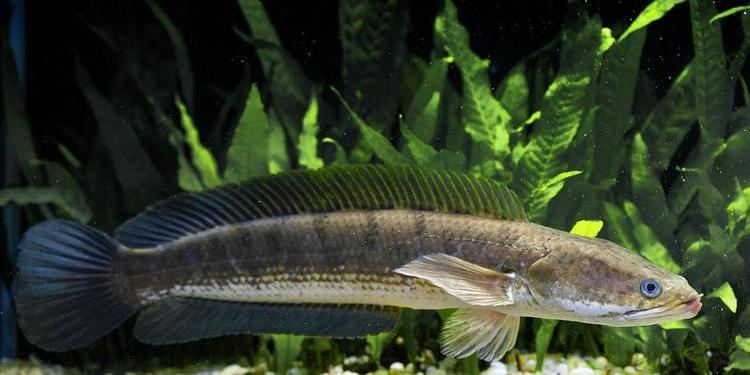 | ||
Similar Giant snakehead, Snakehead, Clarias, Nile tilapia, Pangasius | ||
Channa striata (snakehead murrel) is a species of snakehead fish. It is also known as the common snakehead, chevron snakehead, and striped snakehead. It is native to South and Southeast Asia, and has been introduced to some Pacific Islands (reports from Madagascar and Hawaii are misidentifications of C. maculata).
Contents
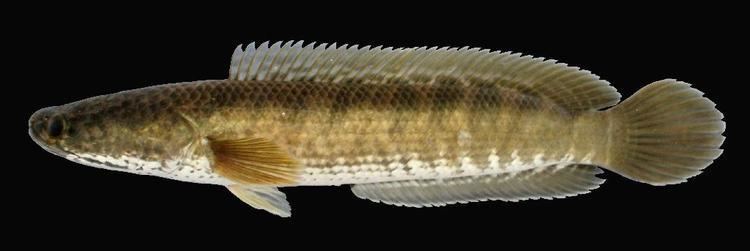
Introduction

It grows up to a meter in length, though because of fishing, this size is rarely found in the wild. It has a widespread range covering southern China, Pakistan, most of India, southern Nepal, Bangladesh, Sri Lanka, and most of Southeast Asia. It has more recently been introduced to the outermost parts of Indonesia, the Philippines, and Mauritius. Reports beginning in the early 20th century that it was introduced into the wild in Hawaii, particularly the island of Oahu, as well as later reports from Madagascar, are the result of misidentifications of C. maculata. The only currently confirmed Hawaiian establishment of C. striata is on a commercial fish farm. Popular media and the United States Fish and Wildlife Service were perpetuating this apparent mistake as recently as 2002. Early- to mid-20th century reports and texts referring to its introduction in California appear to be the result of a misunderstanding.
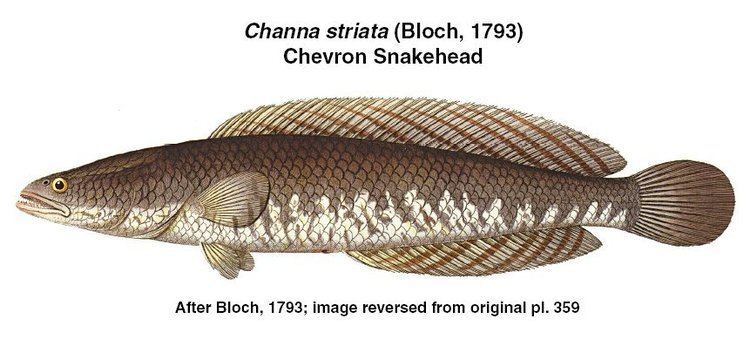
It is an important food fish in its entire native range, and is of considerable economic importance. Adults are dark brown in colour with faint black bands visible across its entire body. Males and females both help to construct a nest out of water vegetation during breeding time. Eggs are guarded by both parents. Fry are reddish orange and are guarded by both parents until they turn greenish brown at around 5–6 cm.
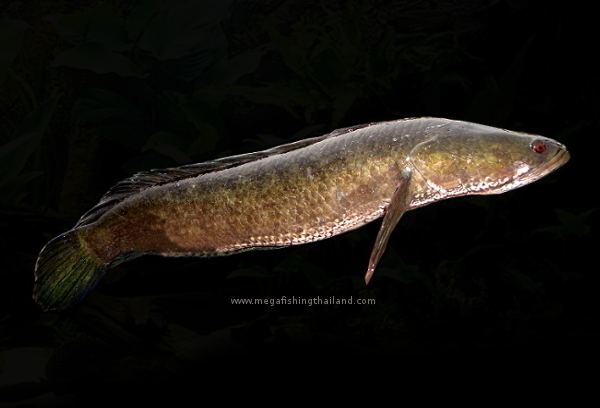
It is common in freshwater plains, where it migrates from rivers and lakes into flooded fields, returning to the permanent water bodies in the dry season, where it survives by burrowing in the mud.
It preys on frogs, water bugs, and smaller fish, and it will attack anything moving when breeding.
Nomenclature

Common snakeheads are known as Nga-mu in Meitei, xol in Assamese, shol (শোল) in Bengali,Sheula (ଶେଉଳ) in Odia, varaal (വരാല്)) in Kerala, India; viral or mural (in Tamil: விரால்,முறால்,செலுமுரல்,நெடுமுரல்) in Tamil Nadu, India; Koramenu/Korra matta(Telugu: కొర్ర మేను/కొర్ర మట్ట), India; and Loola ලූලා in Sri Lanka; pla chon (Thai: ปลาช่อน) in Thailand; gabus in Indonesia; haruan in Malaysia; and haloan, aruan, haruan, halwan, bulig, dalag, or "mudfish" in the Philippines.
Gastronomy
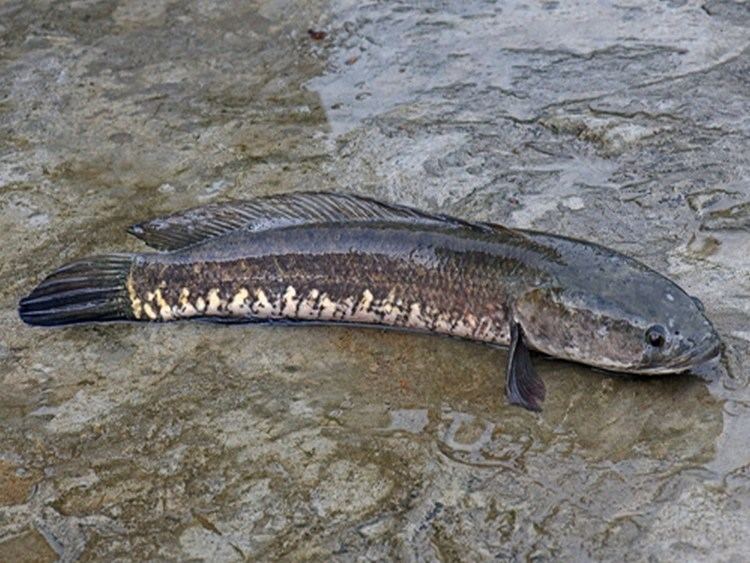
A curry made with this fish and tapioca is a delicacy in Kerala. In Indonesia, common snakeheads are a popular type of salted fishes in Indonesian cuisine. In the Philippines, they are commonly served either fried, grilled, or with soup.
Dishes using this fish eaten with rice is very popular among Bengalis of Bangladesh and West Bengal.
Common snakeheads are very popular in Thai cuisine, where they are prepared in a variety of ways. Grilled fish is a common food item offered by street vendors or in kaeng som. Pla ra, a fermented fish sauce popular in northeastern Thai cuisine, is made by pickling common snakehead and keeping it for some time. Also, a Chinese sausage is prepared with common snakehead flesh in Thailand.
Immune system
Worldwide inland fish culture industry is suffering from massive economic losses due to epizootic ulcerative syndrome (EUS) and fish based pathogens. The available literature indicate that infection from fish pathogens like bacteria (Aeromonas hydrophila and Aeromonas sobria), fungus (Aphanomyces invadans) and viruses can cause stunted growth and severe mortality in the C. striatus. Channa striatus rely on their innate immune components to fight against these infections. Some of the immune molecules that have been characterized in Channa striatus includes Chemokine, Chemokine receptors, Thioredoxin, Superoxide dismutase, Serine Protease, Cathepsin, Lectin.
In culture
The Bathini Goud Brothers in Hyderabad, India, promote the swallowing of live murrel fish and herbs as an asthma treatment, although the high court ruled they cannot call it "medicine". They give it free to children on Mrigasira Nakshatra. No evidence indicates it is clinically effective, and children's rights campaigners have called for it to be banned.
Folklore among Chinese in South China and Southeast Asia has it that eating haruan fish helps in postsurgical wound healing.
